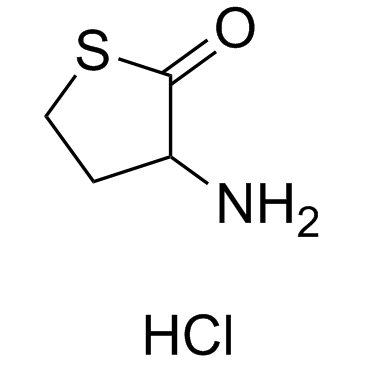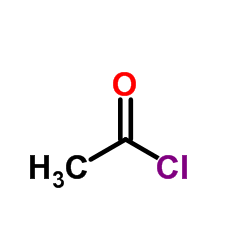Citiolone

Citiolone structure
|
Common Name | Citiolone | ||
|---|---|---|---|---|
| CAS Number | 1195-16-0 | Molecular Weight | 159.20600 | |
| Density | 1.263 g/cm3 | Boiling Point | 427.265ºC at 760 mmHg | |
| Molecular Formula | C6H9NO2S | Melting Point | 109-111ºC | |
| MSDS | Chinese USA | Flash Point | 212.202ºC | |
| Symbol |

GHS06 |
Signal Word | Danger | |
Use of CitioloneCitiolone is a derivative of the amino acid cysteine, used in liver therapy. |
| Name | N-(Tetrahydro-2-oxo-3-thienyl)acetamide |
|---|---|
| Synonym | More Synonyms |
| Description | Citiolone is a derivative of the amino acid cysteine, used in liver therapy. |
|---|---|
| Related Catalog |
| Density | 1.263 g/cm3 |
|---|---|
| Boiling Point | 427.265ºC at 760 mmHg |
| Melting Point | 109-111ºC |
| Molecular Formula | C6H9NO2S |
| Molecular Weight | 159.20600 |
| Flash Point | 212.202ºC |
| Exact Mass | 159.03500 |
| PSA | 71.47000 |
| LogP | 0.54550 |
CHEMICAL IDENTIFICATION
HEALTH HAZARD DATAACUTE TOXICITY DATA
|
| Symbol |

GHS06 |
|---|---|
| Signal Word | Danger |
| Hazard Statements | H301 |
| Precautionary Statements | P301 + P310 |
| Personal Protective Equipment | Eyeshields;Faceshields;Gloves;type P2 (EN 143) respirator cartridges |
| Hazard Codes | T,Xi |
| Risk Phrases | R25 |
| Safety Phrases | 22-24/25-45-36-26 |
| RIDADR | UN 2811 6.1/PG 3 |
| WGK Germany | 3 |
| RTECS | AC8680000 |
| HS Code | 2934999090 |
|
~% 
Citiolone CAS#:1195-16-0 |
| Literature: Journal of the American Chemical Society, , vol. 78, p. 1597 |
|
~% 
Citiolone CAS#:1195-16-0 |
| Literature: Chemical Communications, , vol. 49, # 54 p. 6057 - 6059 |
| Precursor 3 | |
|---|---|
| DownStream 0 | |
| HS Code | 2934999090 |
|---|---|
| Summary | 2934999090. other heterocyclic compounds. VAT:17.0%. Tax rebate rate:13.0%. . MFN tariff:6.5%. General tariff:20.0% |
|
Interleukin-1 beta increases the activity of superoxide dismutase in rat pancreatic islets.
Endocrinology 130(5) , 2851-7, (1992) The suppressive effects of interleukin-1 beta (IL-1 beta) on the function of pancreatic islets may be related to induction of gene transcription and protein synthesis. Presently, the effects of human ... |
|
|
Inability of thiol compounds to restore CNS arylsulfatases inhibited by methyl mercury.
Pharmacol. Toxicol. 69(1) , 71-4, (1991) Arylsulfatase A and B activities have been analysed in different areas of the CNS (olfactory bulbs, cerebral hemispheres, cerebellum, medulla oblongata and spinal cord) during methyl mercuric chloride... |
|
|
Recurrent fixed drug eruption caused by citiolone.
J. Investig. Allergol. Clin. Immunol. 7(3) , 193-4, (1997) Citiolone (N-acetylhomocysteinethiolactone) is a thiolic-derived medication frequently used in Spain and in other countries as a mucolytic agent for the treatment of certain hepatic disorders. Mucolyt... |
| EINECS 214-793-8 |
| 3-Acetamidotetrahydro-2-thiophenone |
| N-Acetyl-DL-homocystein thiolactone |
| MFCD00005480 |
| N-(2-oxothiolan-3-yl)acetamide |
| 2-Acetamido-4-mercaptobutyric Acid γ-Thiolactone |
| DL-N-Acetylhomocysteine thiolactone |
| Citiolone |




